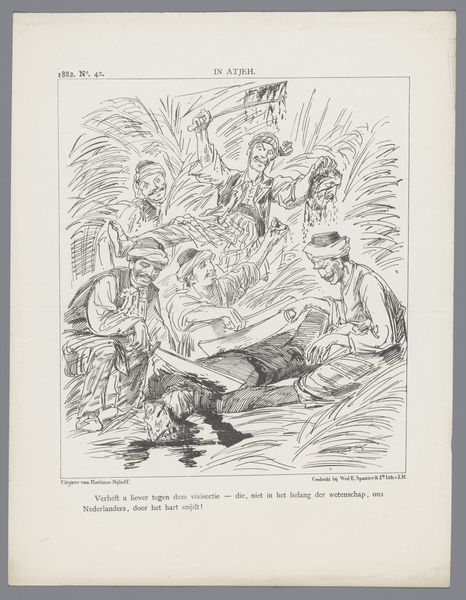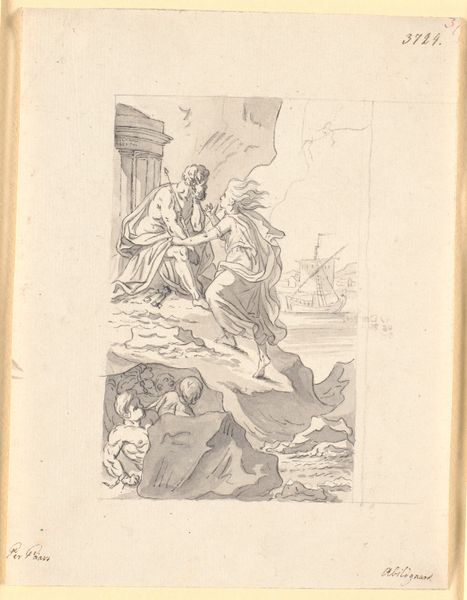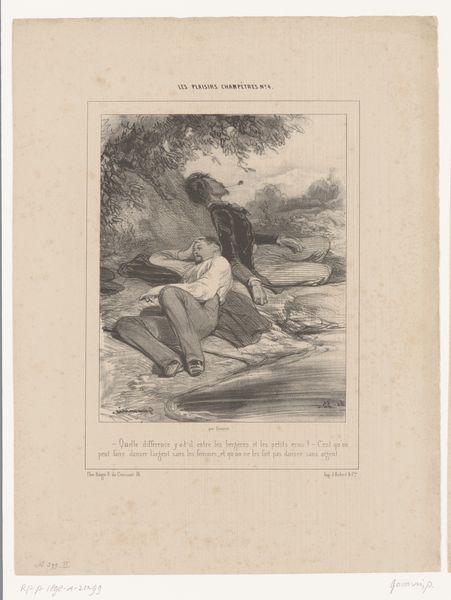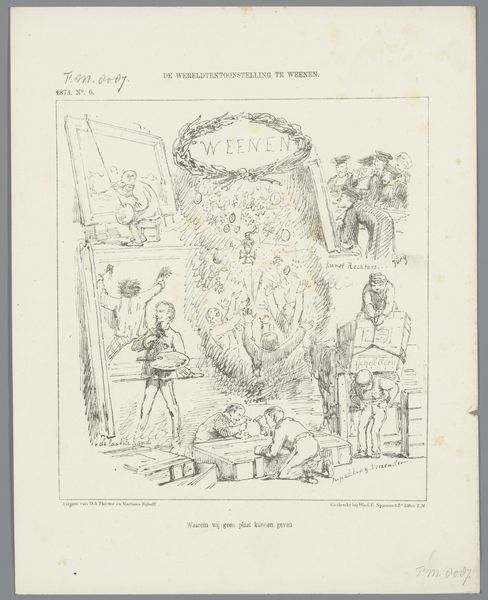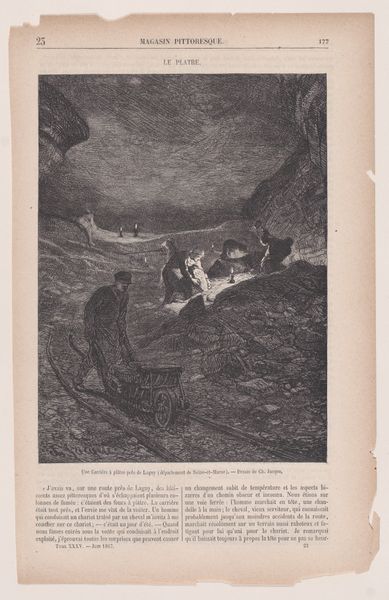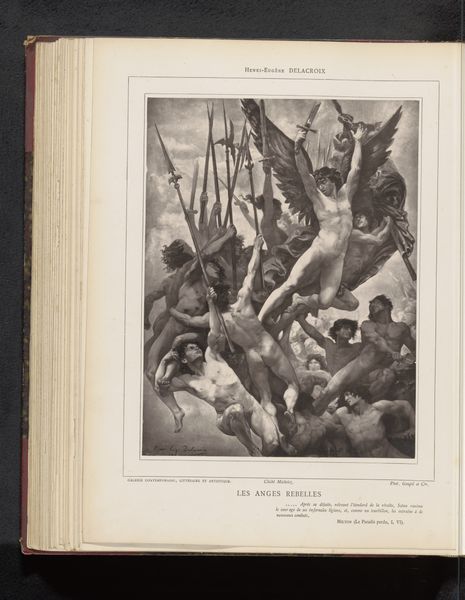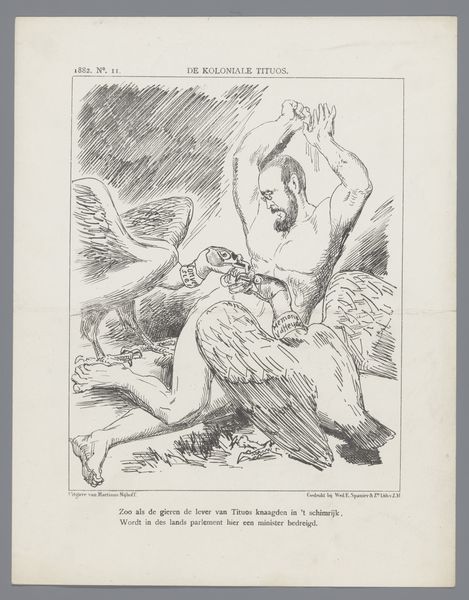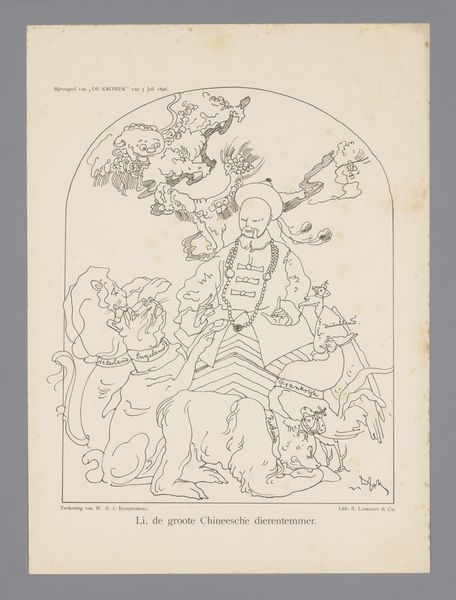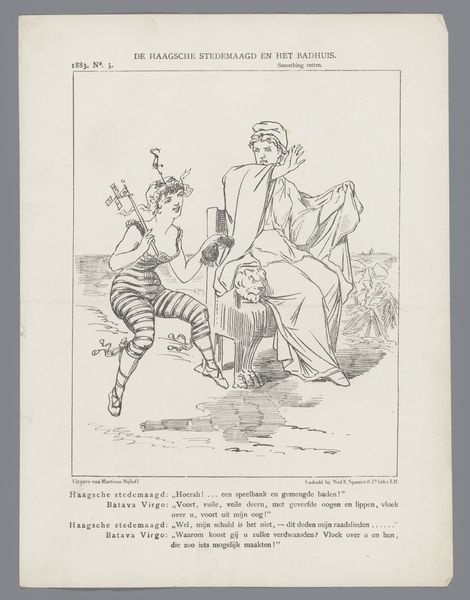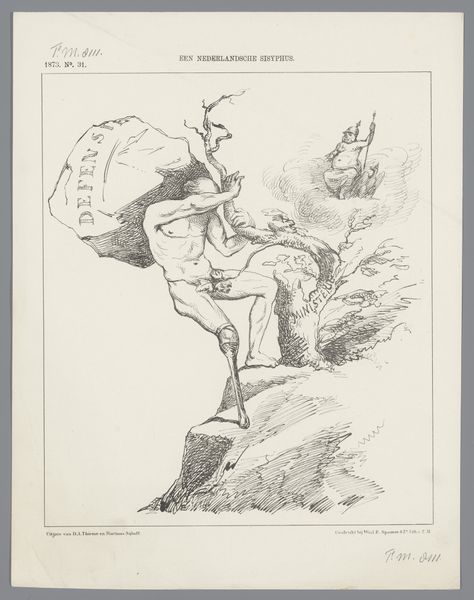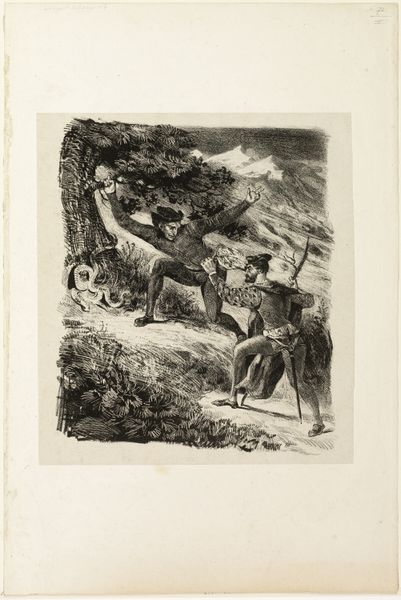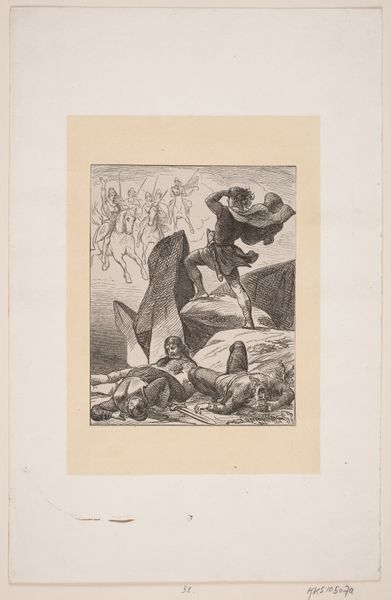
print, woodcut
#
portrait
# print
#
impressionism
#
caricature
#
woodcut
#
history-painting
#
realism
Dimensions: height 275 mm, width 215 mm
Copyright: Rijks Museum: Open Domain
Editor: This is "Spotprent op de verliezers bij de verkiezingen op 15 juni 1886," a print made with woodcut by Johan Michaël Schmidt Crans in 1886. It's a political caricature, and there's a strange, almost dreamlike quality to it with these winged figures falling from the sky. What do you make of all these symbolic choices? Curator: The winged figures immediately suggest a fall from grace, don't they? Consider how wings traditionally symbolize divine power, aspiration, even angelic status. But here, they're clearly failing. It invokes Icarus, perhaps? These political figures literally can't fly, they can't sustain the altitude they thought they were entitled to. What do you notice about the figure in the background on the pedestal? Editor: That figure looks like some sort of allegorical representation, perhaps of Justice or the Dutch Maiden with the lion, holding a flag or staff? Is she there as some sort of opposing force? Curator: Precisely. The artist employs recognizable visual language. That is an allegory, a figure loaded with cultural meaning that is juxtaposed to the plight of the failed politicians. In a caricature, the exaggerated features of these individuals act as signifiers, communicating moral or political failings. Notice the slogan below— "Hun Koningkrijk is niet van deze aarde", "Their Kingdom is not of this earth." Editor: So, these aren't just portraits but loaded symbolic representations that commented on a specific moment in time? Curator: Exactly. The caricature uses recognizable imagery, understood at the time, that conveys layers of political meaning. Even now, the imagery resonates with anyone familiar with western visual tropes of the fall of angels. Editor: That’s fascinating; seeing how symbols connect historical context to the emotional impact of art is so interesting. Thanks! Curator: My pleasure! Recognizing these visual connections unlocks so much.
Comments
No comments
Be the first to comment and join the conversation on the ultimate creative platform.
